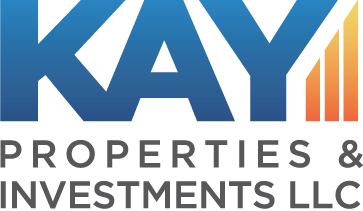By: Dwight Kay
Many 1031 exchange investors researching Delaware Statutory Trust (DST) properties are looking to find out if the DST 1031 concept is “too good to be true”. What’s not to like about mailbox money from an institutional piece of real estate, that is prepackaged and easily closed on in 3-5 days? Well, understanding potential Delaware Statutory Trust problems and things that can go wrong is something that every investor must be aware of before making any investment decisions.
As the CEO and Founder of Kay Properties, I have been personally involved in over 30 Billion dollars of DST properties as a registered representative and have worked with many major and minor DST sponsor companies throughout the industry.
Here are some of the problems that we have seen Delaware Statutory Trust properties have over the many years that Kay Properties has been helping DST investors:
DST Problem #1
Overuse of leverage
It is no secret that the real estate investment world, whether it is individual investors, REITs, Private Equity Funds, Pension Funds and/or DST sponsors, is addicted to leverage. Who wouldn’t want the potential for increased cash flow and increased total returns that debt utilization in a real estate acquisition can potentially provide? However, the increase in risk assumed by investors in leveraged properties is substantial and needs to be addressed.
Many 1031 investors that own their properties free and clear are being advised by certain registered representatives and sponsors that leveraged DSTs are the best for them. In my opinion and experience – to limit unnecessary risk that debt creates – these investors should invest in all-cash/debt-free DST properties that do not have a lender or loan encumbering the property. Staying debt free in a DST property completely eliminates the risk of a lender foreclosure.
The problem with many DST sponsors is that they are heavily reliant on leverage to create positive arbitrage between the acquisition capitalization rate and the interest rate on the loan, which can often create increased cash-on-cash distributions to investors. Obviously, investors like higher cash-on-cash distributions, however, it often is a grave mistake for a 1031 investor that does not have to replace any debt in their exchange to go from a 0% loan-to-value to a 50-65% loan-to-value situation. Why? Just ask the myriad of individual investors, REITs, TIC sponsors and investors, homeowners, pension funds, developers, etc. that all lost property to their lenders from 2008 to 2012.
If an investor doesn’t need to use leverage for their 1031 exchange then they shouldn’t, especially if they are at or near retirement and want to potentially reduce their risk level.
DST Problem # 2
Sponsors overpaying for assets.
The DST structure is widely considered like-kind for a 1031 exchange under IRC Revenue Ruling 2004-86. Although the DST structure is sound, not every property purchased by a DST sponsor is acquired at a price that makes sense considering the market.
One of our Kay Properties analyst and due diligence teams’ favorite thing to do is analyze how a property was purchased compared to other sales in the market place. You would be shocked to see how often properties are being overpaid for by sponsors due to the fact that they are obligated to bring out new product for investors even if the buying opportunities don’t make sense.
One of the due diligence models constantly updated by Kay Properties’ analysts shows the percentage the sponsor paid for the property over or under the comparable properties that were sold in the market. We all know that in real estate a large component of a potentially successful investment happens when you buy the property. With our analysts report, we are able to show a comparative analysis of DST properties available to investors and help our clients understand which offerings were, relative to comparable market sales, grossly overpaid for (we have seen offerings marketed to clients as the best thing since color TV that the sponsor paid 15-30% over the market!) As well as offerings that the sponsor bought considerably below market comparables, which we believe creates considerable value for investors, which potentially helps to offset the fees and costs associated with DST properties. Additionally, those properties bought below market comparable sales can help insulate investors from a correction in the real estate market as a whole.
These are two problems that we see in the Delaware Statutory Trust industry that when understood and empowered with the proper information we believe investors are able to make the right choices for their particular situation. If you are interested in learning more about our DST offering comparative analysis and want to see the various offerings side by side, feel free to reach out to us by emailing info@kpi1031.com, visiting our website at www.kpi1031.com or calling us at 1-(855) 899-4597 .

